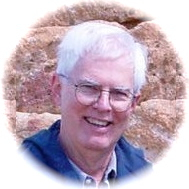HUÉ 1968: A TURNING POINT OF THE AMERICAN WAR IN VIETNAM
Mark Bowden, who wrote the phenomenally successful Black Hawk Down (book and movie), has now published the equally commendable Hué 1968, a book that will likely become the standard account of the grisly encounter that began on the first day of Tet (the Lunar New Year), January 31, 1968. For Bowden, the importance of the conflict in Hué can hardly be overstated: it resulted in the American leaders deciding to exit Viet Nam without winning the war and in American citizens coming to mistrust their leaders with rare intensity (until more recent times).
While these effects are of considerable importance, Bowden’s book succeeds on several levels for other reasons. He doesn’t write from an America-only point of view, he doesn’t make the battle’s outcomes central to the story he tells, and he tethers most of his stories to those civilians and combatants in the city’s contested precincts. Bowden in Hué 1968 gives the reader a 360 degree and an “all ranks” view of the battle.
Bowden begins evocatively by following an eighteen-year-old woman named Che Thi Mung as she rides her bicycle into Hué along the Perfume River to sell woven palm leaf hats to help support her family. She is also a committed Viet Cong operative who daily gathers information about the city’s defensive preparations and readiness for war. Up until January 1968, Hué has been spared from the war’s destruction, a blessing that is about to be withdrawn. Che gathers and turns over intelligence that will help the combined Viet Cong and the North Vietnamese Army attack Hué, the most decisive part of the entire Tet Offensive.
After Che’s introduction to the reader, Bowden multiplies his perspectives. His kaleidoscope picks up an enlisted Army radio man, Frank Doezema, 19, who found himself in Hué on January 30 with thirty-nine days left until his scheduled return to the States. He had seen plenty of action during his year in the country. Unusually, he had made friends with some Vietnamese during his tour.
From Che and Doezema, Bowden switches lenses to capture a few of those less connected with the reality on the ground. LBJ, a president whose interests were decidedly domestic, now found himself by November 1967 trapped into directing a war that would define his presidency. General William Westmoreland was the US commanding general who believed then and forever that the main show would be/was at Khe Sanh, a conceptual error of cataclysmic proportions.
Additionally, Bowden’s graceful prose captures the spirit, commitment, and intelligence of several North Vietnamese and Viet Cong leaders.
Agonizingly, one of the characters in this gritty tragedy is Hué itself. In the view of both North and South Vietnamese, it is the third most important city after the respective capitals of Saigon and Hanoi. It is the ancient religious and cultural capital of Viet Nam. It is home to a highly educated citizenry, many of whom, from the North Vietnamese perspective, need to be re-educated or executed as appropriate. Nearly three thousand Hue citizens will be relegated to unmarked graves. Initially, the American and South Vietnamese armies try to preserve the graceful architecture of the Citadel, Hués hub, but the exigencies of urban warfare will reduce much of it to rubble and leave the remainder punctured by bullets, grenades and rocket fire.
Mark Bowden shows us in graphic detail why the North Vietnamese lost this battle but won the war and how stupid is the old saw: “the victors write history.” The Tet Offensive and principally the battle for Hué produced a stalemate that would eventually favor the North Vietnamese; the Americans would go home in 1975 much as did the French twenty years previously. As far as victors writing history—in this war, the war the Vietnamese call the American war—it is obvious that the losers have spilled far more ink writing this history than the winners ever will. – Neal Ferguson
Also available by Mark Bowden: Black Hawk Down; Killing Pablo; Guests of the Ayatollah; The Finish, the Killing of Osama Bin Laden; Worm; Doctor Dealer; Bringing the Heat; Winning Body Language; Road Work; The Best Game Ever; Finders Keepers; The Three Battles of Wanat; Tame the Primitive Brain; Our Finest Day; The Malvern Hills; Defending Scilly; The Stonehenge Landscape; Pitt Rivers; An Archaeology of Town Commons; Furness Iron; In the Company of Heroes, (with Michael Durant and Steven Hartov









